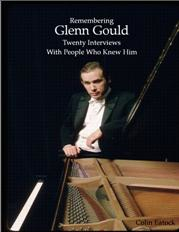There is such a fuss coming up over the next two weeks as people latch on to the Big International Brand that is Glenn Gould. In Toronto there will be concerts, lectures and all sorts of weirdness at Convocation Hall.
- Classical Music 101: What Does A Conductor Do? - June 17, 2019
- Classical Music 101 | What Does Period Instrument Mean? - May 6, 2019
- CLASSICAL MUSIC 101 | What Does It Mean To Be In Tune? - April 23, 2019
All this noise and hoopla might not necessarily do justice to the man or his art, so this is the first instalment in a little series where I try to put the issues into perspective.
Let’s start where the Big International Brand begins and ends: J.S. Bach’s Goldberg Variations.
Gould double-handedly made this Aria and 31 variations into one of the It works of the classical canon for our times.
The initial 1955 recording is considerably different from the last 1981 album, yet both are unmistakeably Gould. Why is that?
Since the objective of these posts is to be as clear and straightforward as possible, I want to posit the explanation this way:
The Goldberg Variations were written for harpsichord, which gives the player no option for highlighting counterpoint dynamically. In other words, all the notes are the same volume all the time. Instead of varying dynamics, the harpsichord player uses subtle changes in how long a note is held to make it stand out against the others.
The modern piano gives the player a wide range of expressive tools that allow a nearly infinite number of dynamic shadings to enter the picture. To the purist, each note struck on a piano becomes a distortion of Bach’s original scheme.
Gould was no purist, because he didn’t like the harpsichord much. He played the Goldbergs on the a modern concert grand piano — as if he were at a harpsichord, trying to give equal weight to all the voices Bach set before his fingers.
That was and remains his great interpretive coup. For the listener, a balance in the counterpoint means that it is your ear and not the interpreter’s choices that decide which “voice” will stand out on each track. Each time one listens, it can become a different experience, depending on what you want to hear.
Yes, there are many, many other things to consider in his interpretations, including tempo, what’s repeated and what’s not and his use of ornaments. But I think these matter a lot less in what makes Gould’s Goldbergs so distinctive.
To help make this point real and understandable, you can go to the University of Oregon’s Oregon Bach Festival interactive website. It provides us with the earliest known manuscript (a 1741 document that belonged to Bach’s first biographer, Johann Forkel) of the Goldberg Variations along with interpretations at the harpsichord and modern piano.
A number of clever interactive features allow us to flip the pages and get inside the score a little bit. The differences between the sound, capabilities and temptations on the part of the interpreter at each instrument immediately becomes clear (whether or not you like the actual interpretations on offer).
It’s a fascinating study that doesn’t mention Glenn Gould yet helps provide an enormous amount of insight into what he was doing at his piano.
You’ll find everything you need here.
(For the more chorally minded, Bach’s B-minor Mass also gets the full interactive treatment at the Oregon site, with the help of Helmuth Rilling.)
John Terauds
- Classical Music 101: What Does A Conductor Do? - June 17, 2019
- Classical Music 101 | What Does Period Instrument Mean? - May 6, 2019
- CLASSICAL MUSIC 101 | What Does It Mean To Be In Tune? - April 23, 2019




